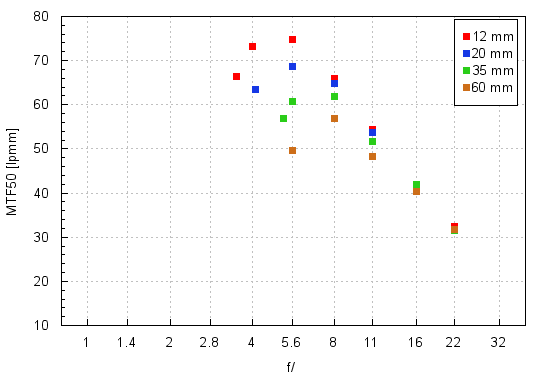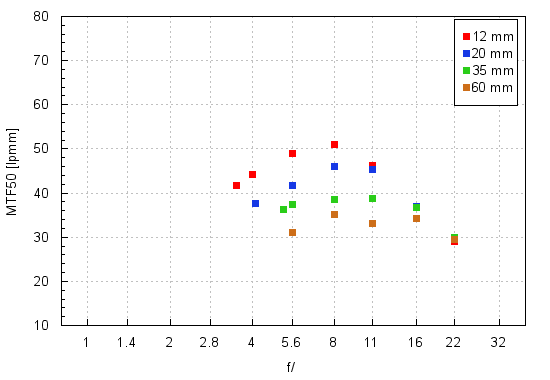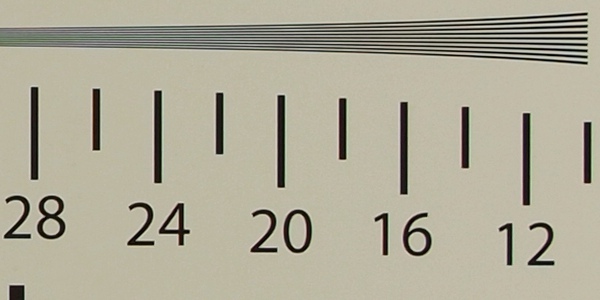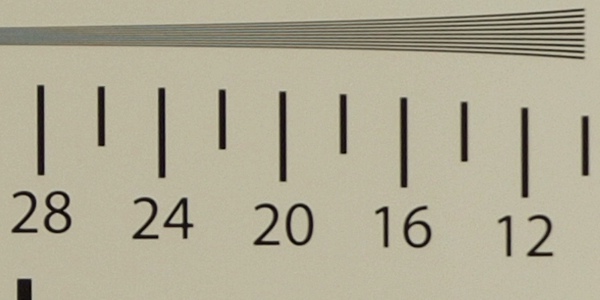Panasonic Lumix G 12-60 mm f/3.5-5.6 ASPH. POWER O.I.S.
4. Image resolution
Let’s glance at the graph below and check how the tested lens compares in the frame centre.

Please Support UsIf you enjoy our reviews and articles, and you want us to continue our work please, support our website by donating through PayPal. The funds are going to be used for paying our editorial team, renting servers, and equipping our testing studio; only that way we will be able to continue providing you interesting content for free. |
- - - - - - - - - - - - - - - - - - - - - - - - - - - - - - - - - - - - - - - - - - - - - - - -
The best results are observed at the shortest focal length where the lens presents a truly brilliant level. With the increase of the focal length the performance decreases. That effect is not only connected to optical properties but it is also a consequence of a decreasing fastness of the tested instrument and its limitations due to diffraction. Still you should emphasize the fact that even at the maximum focal length you get good results and the lens remains sharp already from the maximum relative aperture. The performance is noticeably better than that of the Olympus 12-50 mm.
Now let’s check the edge of the frame – an appropriate graph is presented below.

The situation is not so rosy any longer. In fact we don’t have any reservations only when it comes to the shortest focal length. In the 35-60 mm range the lens has problems with producing fully useful images not only at the maximum relative aperture but also on stopping down. As a kind of consolation you might add that the edge of the frame is the best exactly in a place you need most often. While taking landscape or architecture photos you employ wide angle the most and it must be sharp across the frame. The tested Panasonic is able to provide you that. When it comes to longer focal length you are often interested only in one part of the frame as the rest belongs to blurry background so a weaker performance on the edge is not so bothersome anymore.
Traditionally we end this chapter by presenting crops taken from photos of our resolution testing scene in the frame centre. It’s worth reminding that these are JPEG files straight from the camera which were saved along RAW files, described above.
| E-PL1, JPEG, 12 mm, f/5.6 |
 |
| E-PL1, JPEG, 60 mm, f/5.6 |
 |






